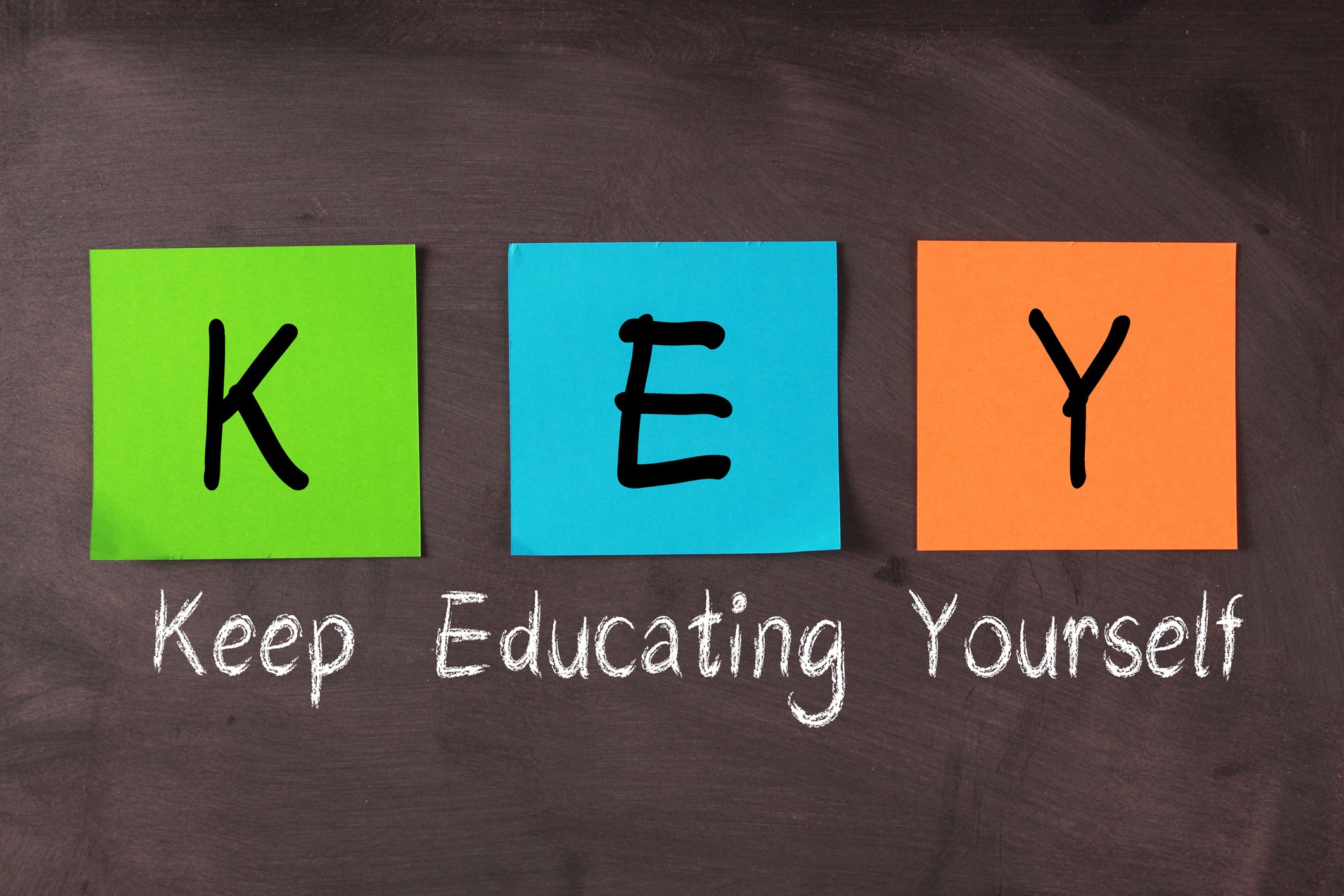
The times in which we are living are truly odd and unprecedented. Actually, there are a lot of words that people use to describe this time. I’ve heard scary, crazy, stressful, and boring, just to name a few. Some people have used this time to improve themselves by working out or trying new hobbies. Others are worried or stressed about their job security and family’s wellbeing. But, one thing I think we can agree upon is that this is a time to come together and revel in comfort and support.
My transition to this “new normal” may have been a smoother one than most; I only say this because I do not have any children or a husband at home. However, I would like to share a little bit about my transition to the online learning environment, as well as some tips to help those who are newer to remote teaching in the hopes that it can provide some comfort and feelings of acceptance that you do not have “to do it all.”
Right now, my school system is going into its fifth week of online learning. This has probably been an easier transition for the high school and middle school teachers since we use digital learning systems in class anyways. But, for the elementary teachers, I know this has been a little rockier, as there’s more time and a little more work involved. For my school, our guidelines state that we must assign work Monday through Thursday, but the time for coursework can only last around 30 minutes. Teachers must hold virtual office hours from 8:00-11:00 during those days. During that time, teachers can do a list of tasks, such as calling parents and students, grading, or lesson planning. Fridays are reserved as a catch-up day; therefore, teachers do not hold office hours that day. The grades we give remotely must only improve student grades, and not hurt them.
We were told to make our teaching strategies and activities simple. With remote teaching, I’ve tried to do just that. In the first few days, my brain was in a flurry. What to do? Where to start? When we got out of school, my ninth- and tenth-grade classes were ending their units on research papers and persuasive essays, respectively, and only had to finish revising and editing. Next, my plan was to move into more writing units with both grades. (Right now, I am teaching English language arts–but I am certified in the social sciences, as well). Initially, I thought putting a complete writing unit on my learning management system (LMS) would be difficult, because ideally, I want to be in class engaging my students with face-to-face instruction. I thought that they wouldn’t be inclined to learn the new information remotely. So, my mind bounced back and forth between keeping it simple by assigning a short story, and creating a full writing unit to place online. I compromised. So, I decided to give my tenth-graders a short story and my ninth-grade class a persuasive writing unit. So far, it has been working out fairly well, and is simple and straightforward for my students.

But, where things get a little tricky, and where organizing and planning ahead comes into play, is making contact with our parents and students. Our school recommends contacting our students who have not completed work, who have not made any contact with us, and also who are on a 504 or Individualized Education Plan (IEP), where students require special accommodations. Making sure my kids understand and keep up with their work is necessary and part of the job. However, it’s become overwhelming at times because of the number of students who are not doing anything and require extensive follow-up. Plus, this time is extremely emotional for both teachers and students who are stressed about keeping up with work and their lives at home. Some teachers are not as tech-savvy as others, which leads to a learning curve, and students are now saturated with work they have to do independently without the comfort of seeing a teacher in-person to help.
Now, I’m not trying to appear as though I have it figured out, or that I believe that I am an expert on the subject of online learning. But, I do want to offer some tips that I have found useful during this time.
1. Don’t be afraid to ask for help
This is especially true for first-year teachers who are now navigating online learning. One of my friends is a first-year special education teacher, and she is right in the middle of IEP season. It has been difficult for her because she has never written a full IEP on her own, and she feels like she is bothering teachers by asking them for help. My advice is if you get lost, confused, or don’t know what to do, ask for help! This is your job and you want to do well with it, especially if this is your first year. Even though we are all adjusting, I wouldn’t worry about bothering others for help. Keep a mindset that this is your job, you want to do it well, and you want to keep it, so utilize resources and ask others. Remember that you aren’t the only one who has questions or needs help during this time. Others might even ask you for help and ideas too! This leads me to tip 2…

2. Work as a team
If you know what you are doing and have your plan all laid out–great! However, that might not be the case for everyone. Some of us like to plan with others and have course content align with other classes, so, Zoom, FaceTime, Google Meet with your teacher partners and plan together! This can take a lot of the load off your shoulders, and it gives you a chance to stay connected with your teacher friends. It is okay to share the work with others.
3. Schedule your time
I’ve always kind of wondered what it would be like to work from home. And, I have to say–I’m not sure if I really like it or not. I’m the type who likes to do work from bed, so I feel like if I had to do this permanently, I might not get out of bed again! But this experience has also taught me that I need to schedule my work time in advance. Planning my school work on the weekends, and having the full week ready to go on Monday has worked for me so far. I try to plan during my office hours throughout the week, but they can get filled quickly with parent phone calls, grading, and answering emails. I also try to schedule in my own self care, which is vital and highly recommended! Take a quick walk outside, or complete a 30 minute workout, anything that can destress you from the day.
4. Keep up with grading
This is a piece of advice I need to follow more closely myself. Grading is one thing that often gets away from me. I don’t think it’s any teacher’s favorite thing to do, especially if there are essays involved. However, in these times of remote learning, I’m able to keep track of which of my students are working if I stay up-to-date on grading.

5. Learn something new
If you find you do have some free time, why not learn something new? Why not explore different educational sites, read a teacher blog, find new activities, spice up old lesson plans. If you’ve been wanting to do any of these things, now is the time to try them! It doesn’t always have to be educational either. It could be something that you have been meaning to do, but just never found the time. Staying creative and branching out from your distance learning routine is a great way to mentally decompress as well.
6. Keep it simple
Finally, even though I compromised with my remote teaching and made my planning a little more complicated than what I had anticipated, I do think it is important to keep things simple. Teaching concisely with easy-to-follow lessons will be less stressful for you and your students and their families. We don’t know everything that our students are dealing with right now. Some may be having to work, babysit brothers and sisters, or be worried and stressed about the world right now and the future state of things. Therefore, I think it is essential for us to keep our work simplified. Think about what is important for students to know or learn during this time and go from there.
Again, I do not have everything figured out. I’m basically living day-to-day. There are a few of these tips for which I should take my own advice. But, I do think right now, it is okay not to have it all together and figure it out as we go.
Seeking more professional development resources?
See what our professional learning department has to offer
Jessica Hayes has been teaching for six years. She completed a bachelor’s degree in social science education at Auburn University in 2009, and a master’s degree in English education from Jacksonville State University in 2014. Recently, she has received her instructional leadership certificate. In her work as a certified trainer for Active Classroom, she builds curriculum maps and trains educators on using the program. In her spare time, she loves reading and learning new technology/productivity skills.
Thanks for the quality and very useful information! I consider these effective points to use to encourage effective engagement of learners whether students OR teachers!
Really good points!